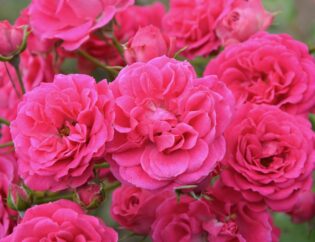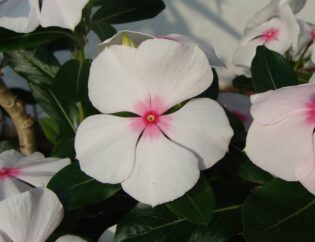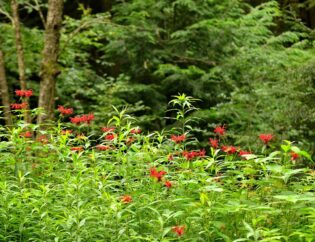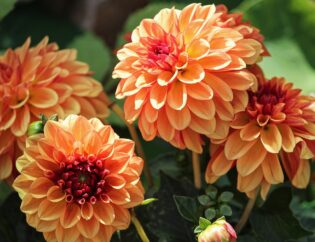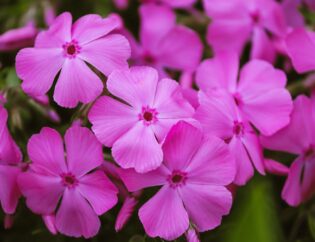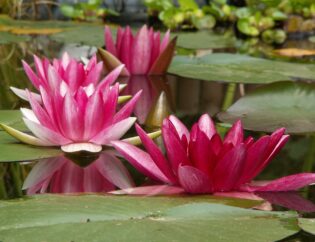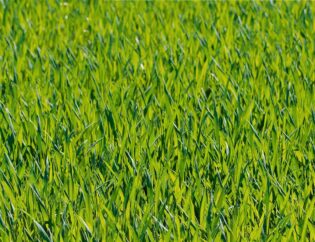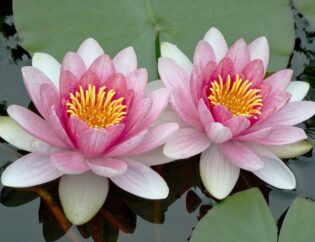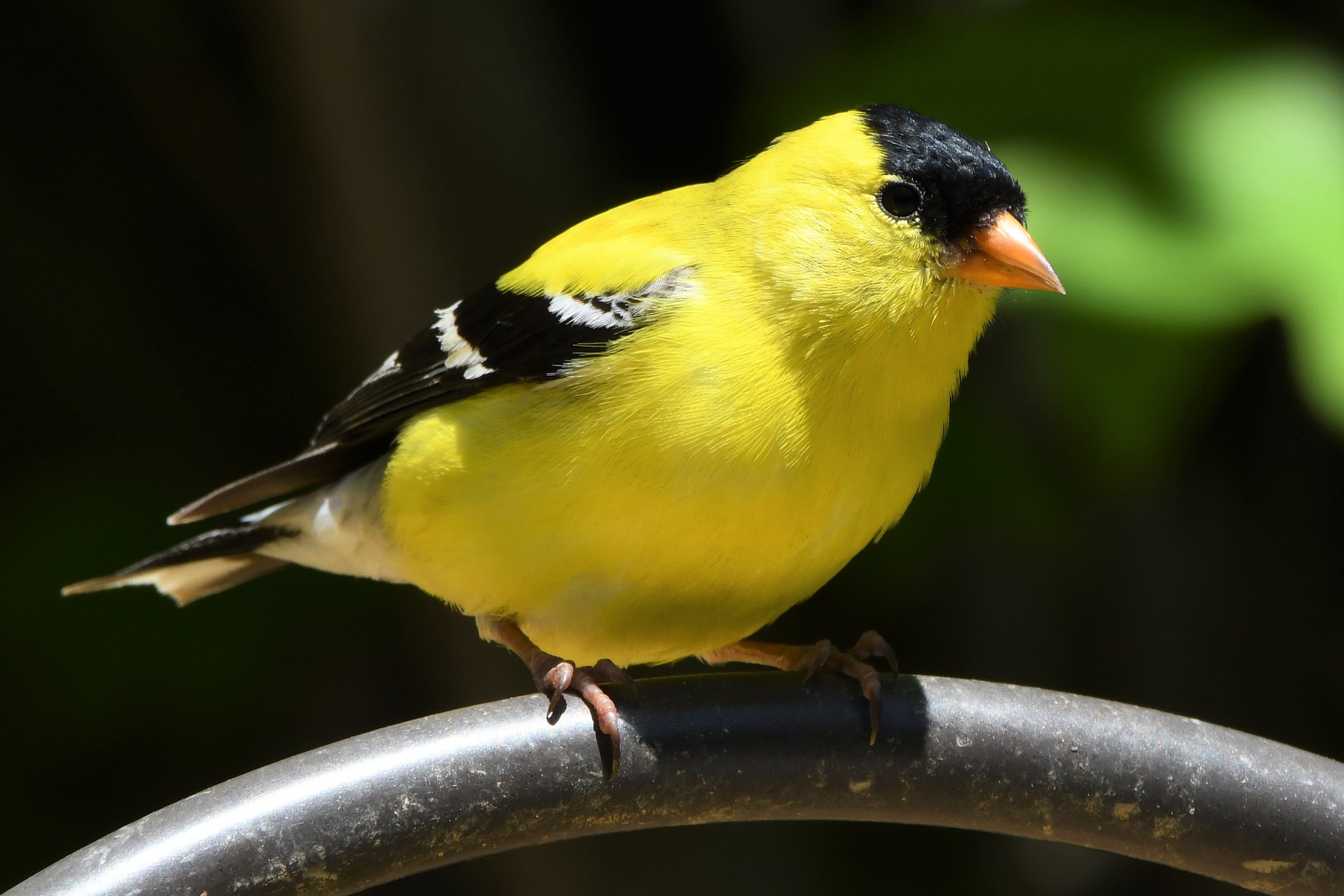
Whimsical, low-maintenance, and in harmony with nature. Homeowners looking for these qualities in their landscaping will love a woodland landscape.
With lovely shade trees, native plants, and low-maintenance perennials providing pops of color — it’s a landscape to fall in love with. Curious about how to plan and create the perfect woodland landscape design? Check out these tips!
Assess the Site
A successful woodland landscape relies on native plants and following the rules of nature to create the designs. To begin planning, assess the following factors:
- Quality of light
- Degree of shade
- Soil quality
- Soil moisture content
- Drainage
Then look at native landscapes with similar conditions. Making note of the plants that grow well in these areas and using them in a landscaping design will cut down considerably on the required maintenance.
You can also look at botanical gardens for inspiration. If shopping at your local garden center, be sure to read the tags, keep the conditions above in mind, and check the plants hardiness in your garden zone.
Design with Curves
Forest paths don’t generally appear in straight lines. Gently, curving paths feel more natural and wild, plus they help give the woodland landscape its whimsical feel.
Thus, choose rounded curves around flower beds and build a meandering path through the scene if there is enough space. Straight lines feel too harsh and unnatural to contribute to the relaxed look of a woodland scene.
Pathways and Stepping Stones
Natural materials look best for pathways through a woodland landscape. Consider mulch, bark, gravel, and flagstones. For a natural aesthetic, do not sharply define the border of the path. Instead, try edging with short logs to give a more natural feel.
For the path itself, choose bark or wood chips instead of gravel if there are a lot of trees. As the trees drop their leaves or needles, the stones and pea gravel become messy quickly and it’s hard to remove organic debris. Large stones can also become slick with moss and water runoff, so be sure to choose textured ones that will provide secure footing.
Gates and Fences
The wrong fencing can easily destroy the sense of nature and calm in a woodland landscape. Choose reclaimed woods to construct fencing or buy an old gate from a reclamation yard. The rustic sense of these materials lends to the quiet, timeless feel of the space.
Other ideas include using hedges, dry-stone walls, or stacked logs as boundaries. Natural materials like these will blend in and support the woodland feel of the design.
Furniture and Seating
Again, natural and organic is the name of the game. For those that prefer to buy something, try visiting antique stores to find old, rustic benches or patio furniture. These weathered items have been aged by the sun and elements, adding to the overall effect.
Wooden furniture works well, but low-profile antique wrought iron furniture is also a nice touch. These pieces don’t take up much visual space but blend casually with the woodland feel.
For a more budget option, a simple plank bench or roughly built rustic-looking table and chairs are perfect for your patio or tucked into the woods. Logs can be anchored for stability and attached to form rustic benches if desired.
Garden in Layers
In the forest, the plants naturally grow in layers. There aren’t tidy rows of matching plants or anything of the sort. Instead, there is a wild array of different low, mid-range, and tall plants jostling for sunlight and nutrients.
This might be a little too wild and unkempt for a landscape design, but keep the principles in mind when choosing plants. Pick different textures and colors and vary the height of the plants. Done well, the plants will look intentionally placed but still feel wild and free — providing visual interest.
Additionally, the color green dominates most natural landscapes. Be sure to apply color sparingly and incorporate far more foliage than flowers. Using soft, light colors and mixing in a neutral like white colored blooms will impart a much more authentic vibe than a garden overflowing with bright red and orange blooms.
Ground Covers
The forest floor is rarely bare and ground covers are a homeowner’s best friend anyway. They help keep things low-maintenance, without looking neglected.
Choose shade-loving native plants and perennial flowers that will reseed themselves and grow back year after year. Wildflowers such as English bluebells and foxgloves are perfect for this purpose. Other fantastic ground cover plants include ivy, moss, ferns, or Virginia creeper.
Ensure the area stays free of weeds until the plants take hold strongly. Otherwise, new seedlings will have a tough time establishing while competing with hardy weeds.
Understory Plants
Ground cover carpets the earth and trees fill the canopy and offer shade. The understory plants are the mid-sized plants that fill in the space between them. In the woods, this area is typically filled with plants like daisies, columbines, bluebells, and climbers like honeysuckle.
While they definitely have their place, fast-growing vines like honeysuckle and Virginia creeper can overwhelm a space and be too aggressive for certain installations. However, shrubs like hydrangeas, azaleas, or evergreen bushes are perfect mid-height options that will also stay in their lanes. Large ferns are also useful for this space.
Canopy Trees
The trees are an integral part of woodland landscaping. However, the big, tall trees that tend to grow in the wild are a little overwhelming for residential landscaping.
Choose trees that grow shorter or are easily trainable to shade the landscaping without growing out of control. Evergreens and birch trees are both great choices. For additional splashes of color, choose flowering trees like dogwoods or colorful ones like Japanese maples.
Birds and Wildlife
The icing on the cake for a woodland garden is the presence of birds, butterflies, and other wildlife frolicking around the space. A hospitable environment will bring these creatures and their interesting antics right into the yard.
Homeowners can encourage animals to come by hanging up birdfeeders or planting trees or bushes with berries and other delicious morsels. Place nesting boxes around the yard and create hospitable spots for birds and beneficial insects to make a home.
Got a Project in Mind?
Here at Atlanta Turf & Tree, we take immense pride in building beautiful, lasting landscapes that double as living art. We have over 35 years of combined experience in the industry and understand the challenges unique to Georgia landscapes. Contact our landscaping services experts to get going on your project!
